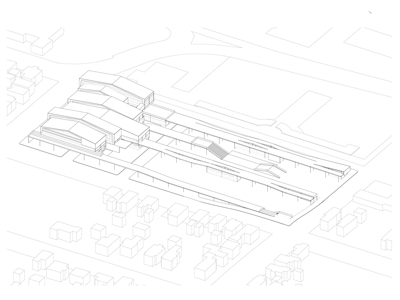
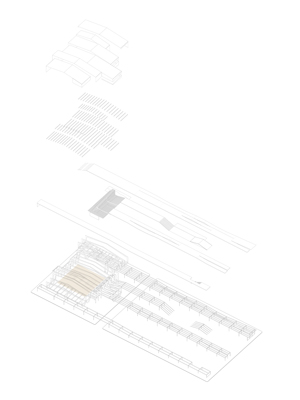

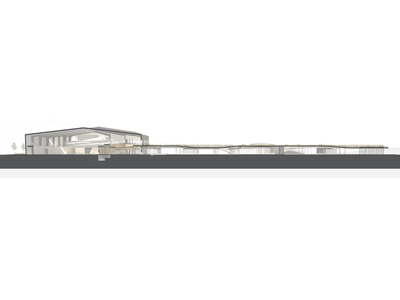


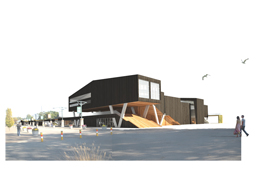

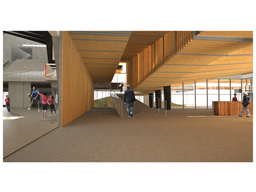
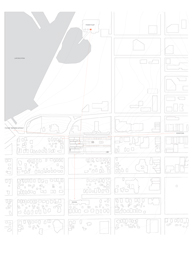

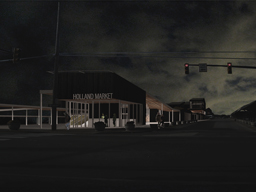

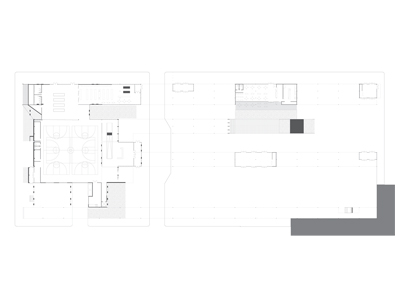
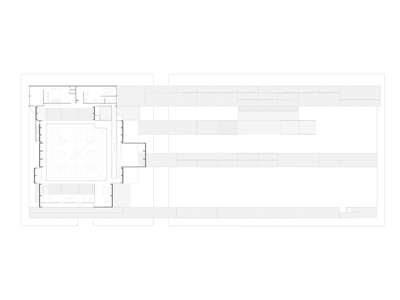

Tarleton Long
Upon first visiting the site in Holland, I was immediately drawn to the adjacencies. The current site of the Civic Center in Holland is immediately adjacent to a thriving, yet intermittent and seasonal, farmers market; this pairing presents a unique opportunity to create an exceptionally public space. As a result, a goal to integrate the farmers market with the civic center to create a type of "civic field" condition emerged. The concept of my project revolves around attempting to hybridize the two types, civic center and public market, and in doing so, introduce a greater programmatic balance between the incredibly "unprogrammed" farmers market (which currently sits as a vast, empty parking lot 5 to 6 days a week) and more programmed civic center with the end goal of further activating the site and connecting the site to downtown and the future "Western Gateway" project. The stimulus for the project was two-fold. First, I was interested in learning from how the Dutch treat and designate public and semi-public space as a means to further activate the roll of the street as a vital public space in the city. More specifically, I drew inspiration from how the Dutch treat and vary surfaces across a larger space to further program these spaces and articulate their rolls. Furthermore, I was interested in how balcony/terrace space in Holland is integral to creating a sectional relationship to the street and further connect private spaces to the public street spaces. While these Dutch notions of the public and semi-public space certainly laid the groundwork for approaching the problem, I also found inspiration from traditional public market typologies, particularly precedent cases where public markets were paired with public assembly space. These precedent cases, together with responding to the site and local climate conditions, became the groundwork for the arrangement of the relationships between public, semi-public, and programmed spaces and for generating the form. The building's form emerged as two primary components, market canopies and civic scale sheds. The canopies provide sheltered space for market activities, undulate in section to provide gathering and access points, and plug in directly to the civic sheds as a means to provide a continuation of the market into the assembly space( and vice versa), as well as provide infrastructure to nodes of retail space in the market that would have more long term tenants. The result is not a civic center, but instead, a civic field condition.